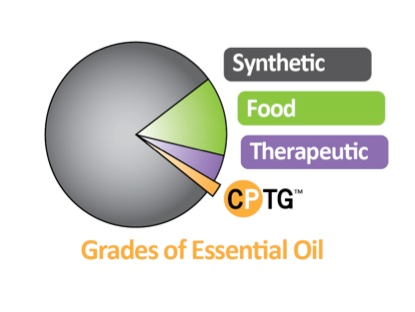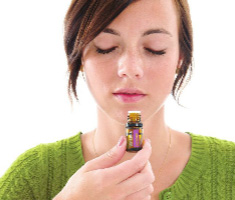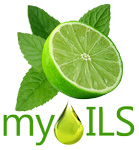What are Essential oils
Essential oils are natural compounds found in the seeds, bark, stems, roots, flowers, and other parts of many different plants. When properly harvested, these essential oils are known for their powerful fragrance, as well as their potent healing qualities. Fact: It takes as much as 12,000 rose blossoms to distil 5mL of tested-grade essential Rose oil.
For centuries people have been using the healing qualities of pure tested grade essential oils to provide a safe and natural alternative to promote health and wellness.
Pure tested grade essential oils can affect every cell of the body within 20 minutes and then be metabolized like other nutrients and are very potent antioxidants.
There are a growing number of products claiming either to be or to contain essential oils. They range in price and quality and are found in skin care, cosmetics, aromatherapy, and other products. However, many of these products do not use pure essential oils and often use fragrant synthetic chemical substitutes to dilute or replace more expensive essential oil extracts. Furthermore, there are no current regulatory standards for the descriptive use of the “tested grade” for products labelled as essential oils.
What is a doTERRA Essential Oil? 2:13mins
The CPTG Certified Pure Tested Grade® mark* represents the internal standards used by dōTERRA for sourcing and testing pure aromatic botanical extracts using independent testing laboratories. The dōTERRA brand and registered CPTG mark represent the dōTERRA guarantee of pure essential oil extracts that meet high standards for both purity and material composition and accurate product labelling.

doTerra CPTG Testing Methods
dōTERRA tested-grade essential oils are pure, natural aromatic compounds carefully extracted from plants. They do not contain fillers or artificial ingredients that would dilute their active qualities. Proper extraction and quality control methods also ensure that dōTERRA essential oils are free of any contaminants, such as pesticides or other chemical residues. In addition to being pure and natural, CPTG Certified Pure Tested Grade essential oils are subjected to additional quality testing that ensures the correct composition of the active natural compounds found in each oil. Even though an essential oil may be pure, if the right species or part of a plant has not been used, or if the plant has not been grown in the right environment, harvested at the right time, or not distilled under the right conditions, the natural chemical makeup of the extraction will not provide as predictable and powerful a benefit. In some cases, the wrong plant part harvested at the wrong time may result in an extract that contains harmful levels of some constituents.
CPTG Certified Pure Tested Grade ® essential oils are guaranteed to be pure, natural, and free of synthetic compounds or contaminates. dōTERRA essential oils are subjected to rigorous mass spectrometry and gas chromatography testing to ensure extract composition and activity. dōTERRA essential oils represent the safest and most beneficial essential oils available today.
Why doTerra 3:03mins
Essential Oils Throughout History

Essential oils have been used throughout recorded history for a wide variety of wellness applications. The Egyptians were some of the first people to use aromatic essential oils extensively in medical practice, beauty treatment, food preparation, and religious ceremony. Frankincense, sandalwood, myrrh, and cinnamon were considered very valuable cargo along caravan trade routes and were sometimes exchanged for gold.
Borrowing from the Egyptians, the Greeks used essential oils in their practices of tested massage and aromatherapy. The Romans also used aromatic oils to promote health and personal hygiene. Influenced by the Greeks and Romans, as well as Chinese and Indian Ayurvedic use of aromatic herbs, the Persians began to refine distillation methods for extracting essential oils from aromatic plants. Essential oil extracts were used throughout the dark ages in Europe for their anti-bacterial and fragrant properties.
In modern times, the powerful healing properties of essential oils were rediscovered in 1937 by a French chemist, Rene-Maurice Gattefosse, who healed a badly burned hand with pure lavender oil. A French contemporary, Dr. Jean Valnet, used tested-grade essential oils to successfully treat injured soldiers during World War II. Dr. Valnet went on to become a world leader in the development of aromatherapy practices. The modern use of essential oils has continued to grow rapidly as health scientists and medical practitioners continue to research and validate the numerous health and wellness benefits of tested-grade essential oils.
How to use CPTG Essential Oils
Essential oils are used for a very wide range of emotional and physical wellness applications. They can be used a single oil at a time or in complex blends depending on user experience and desired benefit.
Using essential oils can be both profoundly simple and life changing at the same time. Working with someone who has used essential oils before will help first-time users have a more beneficial and enjoyable experience. A large amount of information is readily available for those desiring to increase their knowledge of essential oil applications.
Essential oils are usually administered by one of three methods: diffused aromatically, applied topically, or taken internally as dietary supplements.
Follow all directions on the product labels.

Aromatic Uses

Our sense of smell influences many physiological pathways including the stimulation of hormones and other metabolic processes. Aromatherapy is founded on the body's predictable response to specific olfactory stimuli. Essential oils are widely used in aromatherapy applications. Certain essential oils, when diffused in the air, can be very stimulating, while others can be calming and soothing. Beyond emotional benefits, diffusing essential oils can purify air of unwanted odours. Low or no-heat essential oil diffusers are recommended as they do not change the chemical structure of the oil being diffused. Essential oils can also be used as cleansing and purifying additives to laundry and surface cleaners throughout the home. Try inhaling a drop in your hands, use a drop on a handkerchief, pillowcase and collar of a shirt or try a dab behind the ear to wear as a perfume.
Topical Uses

Due to their natural molecular composition, essential oils are safe, non greasy and easily absorbed by the skin when applied topically. Application of essential oils can have immediate, localized benefit to the target area of application. They have restorative and calming properties and can be used effectively with massage and beauty therapy. The chemical structure of essential oils also allows them to be absorbed into the bloodstream via the skin for internal benefit throughout the body.
Internal Uses

Essential oils can also be used as dietary supplements supporting a variety of healthy conditions. Some essential oils have powerful antioxidant properties while others help support healthy inflammatory response in cells. Many essential oils are generally regarded as being safe for dietary use, but some oils should not be taken internally. Do not use any essential oil product internally that does not have the appropriate dietary supplement facts on its label. Some essential oils enhance benefits when added to your beverage or favourite foods.
(Be sure to use only 100 percent pure, tested-grade essential oils and follow all label warnings and instructions. Essential oils should not be used in the eyes, inside the ear canal, or in open wounds. If redness or irritation occurs when using essential oils topically, apply any vegetable oil, such as fractionated coconut oil or olive oil, to the affected area. Consult your physician before using essential oils if you are pregnant or under a doctor's care.)
Health Benefits of 100% pure essential oils
Scientifically, essential oils are non water-based phytochemicals made up of aromatic compounds that evaporate. Phytochemicals are the 200 to 800 chemical compounds that naturally occur in plants. Although they are fat soluble, they do not include fatty lipids or acids found in vegetable and animal oils. Essential oils are very safe and immediately absorbed by the skin so they do not leave you feeling “oily”, to the touch.
doTERRA Lemon Essential Oil 0:58mins
Breathe - (Easy Air) 0:49mins
Deep Blue - (Ice Blue) 0:51mins
DigestZen 0:53mins
